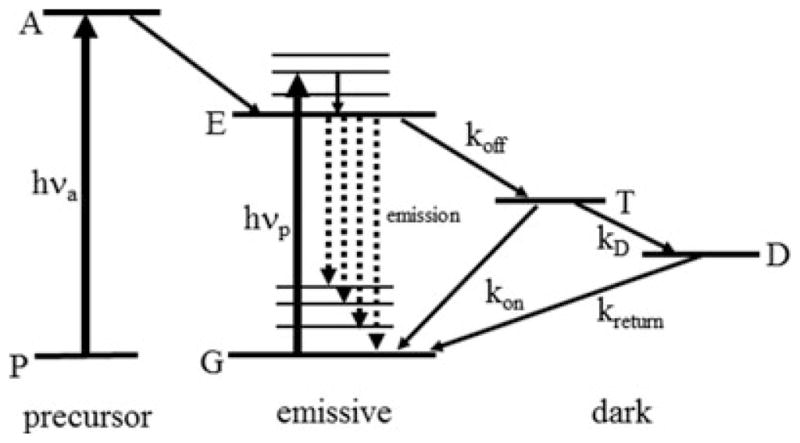Fig. 4.

Active control of single-molecule emission from the energy level point of view. The standard emissive form of the molecule is in the centre; pump photons of energy hνp drive transitions from the ground state G typically to vibronic sidebands of the first electronic excited state E. Vibrational relaxation quickly leads to population of state E, from which emission can occur terminating on vibrationally excited levels of the ground state (dashed lines). The molecule can turn off with rate constant koff into a dark state such as a triplet state T for a time period equal to 1/kon before the emission cycle resumes. In some schemes, the molecule can leave the state T with rate constant kD, populating long-lived dark state D for a time (kreturn−1). If photoactivation is involved, then the molecule is not emissive in its precursor form P, but optical activation can occur by pumping to an activated state A with photons of energy hνa, which, with a certain probability, generates the emissive form of the molecule.
